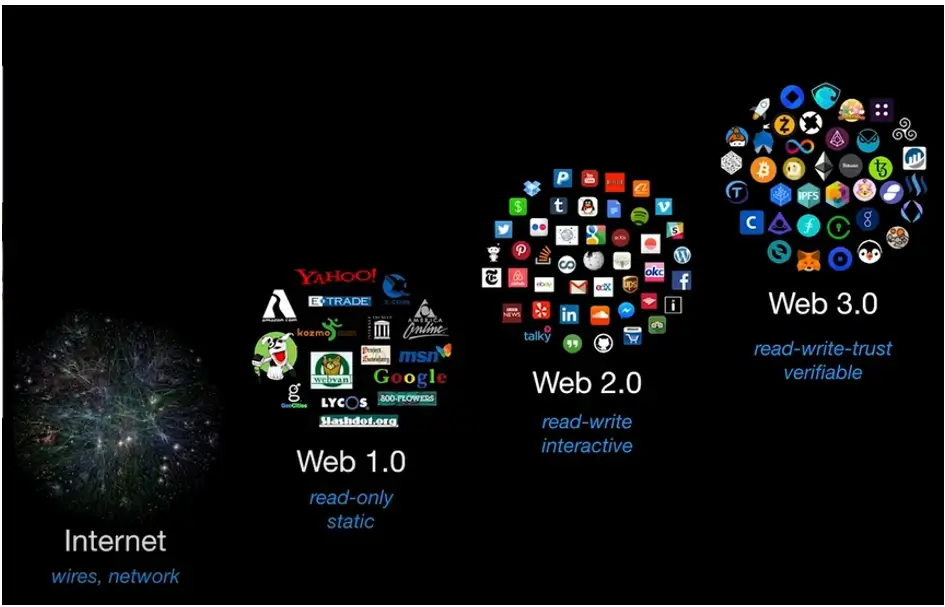Web 3.0 Explained: All you need to know and what is happening in India
Web 3.0 Explained: It’s difficult to envision our existence without electronics and internet access. Where should we meet up with pals in the frantic arrivals area at the airport? Which Indian takeaway restaurant is the closest? Is it possible for me to transfer money to my closest buddy who misplaced his wallet in Ibiza? I’d want to keep an eye on my apartment while I’m gone; can I keep track of my appliances, lights, and cameras? You can complete all of the above in under an hour and still have time to read this blog, thanks to Web 3.0.
Web 2.0 and 3.0 explained

What happened to make us so dependant on the Internet? From the early days of the “Web” (1991-2004), when it published simple, static pages of personal websites and basic information, functionality has steadily improved. It was one-dimensional, yet it acted as a repository for knowledge that was desired. Opera was a pioneer in the development of two ultra-fast surfing engines, which are essential for browsers to function. Its compact and quick browser was installed as a significant product component and feature in Nokia and Ericsson mobile phones. Did you know that Opera was the first to introduce the “tab” feature?
The following step, known as Web 2.0, took consumers to a more participatory version that allowed them to communicate with other content providers. Websites like Facebook and Flickr, as well as picture and video sharing sites like YouTube and Flickr, brought like-minded people together to engage, build affinity, and foster cooperation all over the world.
You probably aren’t aware of it, but you are benefiting from both Web 2.0 and 3.0 at the same time! The next generation is defined by the prevalence of internet-enabled mobile devices and the integration of sensors, self-sovereign identities, and built-in crypto wallets with the web. Web 3.0 is how technologists refer to it. The Web of the Future
Web 3.0 brings together gadgets (mobile phones, automobiles, appliances, music, and home entertainment systems), decentralized networks (distributed databases, cryptographic keys), and advances in machine learning and reasoning (which yields products like Siri, Alexa, Cortana). It appears natural to ask Siri or Google Assistant about the weather forecast for tomorrow, then check your phone for open dinner reservations before sending Bitcoin to a buddy in Dublin using face recognition.
Read | What Exactly Is The Metaverse & Why Is It A Big Deal?
Web 3.0 and the Internet of Things
What benefits would Web 3.0 bring to my life? Tesla’s over-the-air update is an example of Web 3.0 synchronizing with the “Internet of Things” (IoT). Owners in the United States got a recall notice stating that a charger plug needed to be replaced because it was causing car fires. Rather than needing to arrange service at a dealership, owners sat in the dark, unaware that Tesla had executed a software upgrade remotely, removing the hazard from 29,222 automobiles. The flow of connection between humans and technologies has evolved away from “fashionable” toys (Fitbits) and toward “life-enhancing” activities with a clear value proposition (Tesla’s safety recall). It’s evident that there are instant cost savings in this IoT application, as well as brand distinction and loyalty.

A program can be your door to Crypto and Web 3.0
Let’s look at how a cryptocurrency (digital money) “wallet” may be integrated into a Web 3.0 browser. A crypto wallet is a digital wallet that stores cryptocurrencies in a secure, private location and acts as a single sign-on for all Web 3.0 decentralized services (called Dapps).
Most people instantly think of Bitcoin, but it’s not a currency you’d use on a daily basis. Cryptocurrencies also include gaming coins that may be used to buy virtual items in games such as guns, “skins,” and cars. On certain platforms, players are rewarded for their time spent playing the game, and they may then use the tokens they earn to make in-app purchases to create a “roundabout economy.” Imagine tweaking your triumphant cutting edge and using it in an assortment of hybrid games! It’s up to you whether you want to purchase it, sell it, or keep it as a keepsake. You may even transfer your golden sword or “skin” for good luck battles to another platform. These “tokens” or collectibles can be held or hired by players who have not yet finished the level or challenge. The transactions are made easier using cryptocurrency, and the products are kept in your wallet.
Wrapping Up- Web 3.0 Explained
Web 3.0 combines what we use now with technological improvements, adds cryptocurrencies to many devices, and allows access through Dapps. You’ll require a crypto wallet whether you’re gaming, exchanging collectibles, or purchasing the up-and-coming age of game tickets. Opera is the first Web 3.0 browser with a built-in crypto wallet, making it safe, dependable, and simple to use.
